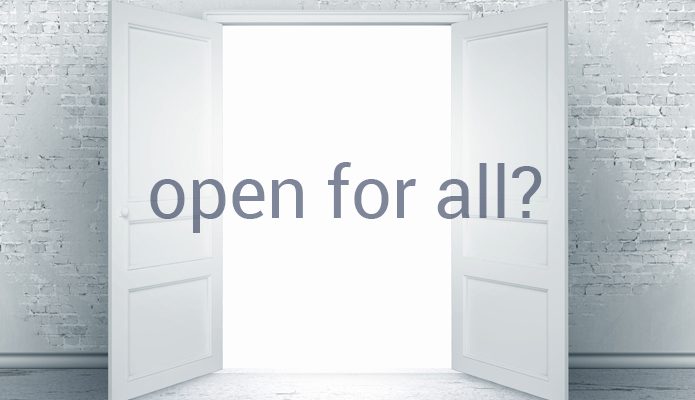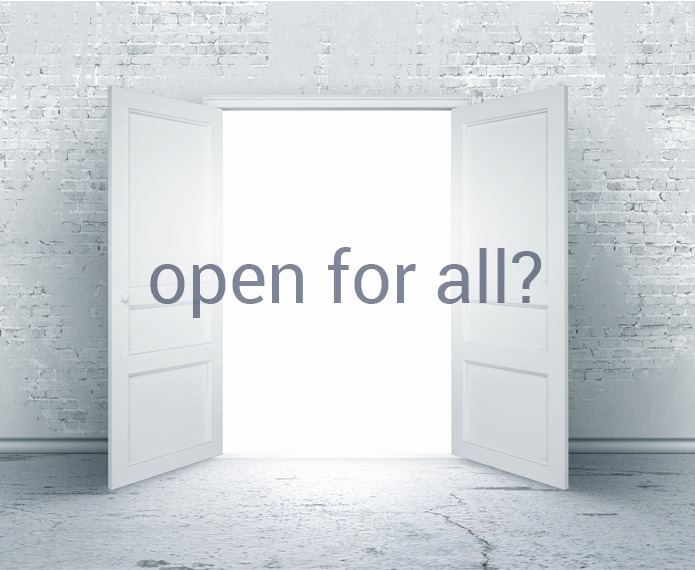The thinking of Comrade F. Dobler from the early 20th century remains relevant and even prescient: those who need open access to information may be those who are fundamentally excluded from public libraries.

Karl Marx and Critical Librarianship
Karl Marx is critical to an understanding of the Needs Based Library because he introduced the theoretical concept of the Base and the Superstructure. In Marxist theory, human society consists of two parts: the Base (or substructure) and Superstructure.
Base and Superstructure
The Base comprises the forces and relations of production into which people enter to produce the necessities and amenities of life. These relations determine society’s other relationships and ideas, which are described as its Superstructure.
The Superstructure of a society includes its culture and ideology. The Base determines (shapes) the Superstructure, yet their relation is not strictly causal, because the Superstructure often influences (maintains) the Base; the influence of the Base, however, predominates. In Orthodox Marxism, the Base determines the Superstructure in a one-way relationship.
Applied to Public Libraries
If we apply this concept to public libraries we can interpret the Superstructure as the organizational culture (“the way we do things around here”) and the Base as the Strategy (what we do and why we do it), Structures (staffing and services) and Systems (policies and procedures). In this model the Base (Strategy, Structure, Systems) determines (conditions) the Superstructure (Culture). But their relation is not strictly causal, because the Superstructure (Culture) often influences the Base (Strategy, Structure, Systems); the influence of the Base (Strategy, Structure, Systems), however, predominates.
The Strategy is focused on the needs of Non Users and particularly those with the greatest needs. Community needs are identified, prioritized and met via co-production The Library and the Community work together in the planning, design, delivery and evaluation of library services.
Holacracies and Circles
The Staff Structure is a Holacracy which removes power from the management hierarchy and distributes it across clear roles, which can then be executed autonomously, without a micromanaging boss. The work is actually more structured than in a Traditional Library, just differently so. The Traditional Library hierarchy is replaced by a series of interconnected but autonomous Circles. This shift can dramatically increase a Library’s capacity to adapt to changing conditions. It also allows these Libraries to have both alignment and agency without the typical pathologies of “leaderless” groups or autocratic micromanagement that slows everything down. There is a clear set of processes for how a Circle breaks up its work, and defines its roles with clear responsibilities and expectations.
Staff have multiple roles, often in different Circles, and those role descriptions are constantly updated by the Circle actually doing the work. This allows people a lot more freedom to express their creative talents, and the Library can take advantage of those skills in a way it couldn’t before. Since roles are not directly tied to the people filling them, people can hand-off and pick-up new roles fairly easily. But more than that, it means that when you’re filling a role, you’re able to energize the work with a level of clarity and awareness most traditional employees don’t have.
The roles are vested with authority, not the people. This means that the roles and the authorities can be constantly updated without office politics. The agility that this provides comes directly from distributed authority. Authority is truly distributed and decisions are made locally by the individual closest to the front line. Circles are self-organized: they’re given a purpose, but they decide internally how to best reach it.
The Service Structure is needs-led and focused on communities and community development. The service structure is updated every month in every Circle i.e. what roles are doing and owning what work or decisions. This happens in frequent incremental steps rather than rare massive changes, and it happens in every Circle at all levels. The Library reorganizes itself as often as necessary to capitalize on a learning opportunity or address a critical problem. This happens in frequent “governance meetings” where roles and processes are revised given what’s actually happening in the Circle. Services are delivered via partnership working with a range of organizations and community development through relationship building. Community engagement is at the Leadership level with local residents and organizations initiating and leading on issues with support from the Library.
The Constitution
The Systems are empowering with authority distributed not from the leader at the top to a group of people, but to an explicit process defined in detail in a written document: the Constitution. Everyone is bound by the same Constitution, even the CEO. The transparency of the Constitution means that you no longer have to depend on office politics to get things done. With the Constitution made accessible to everyone, anyone in the Library can quickly figure out who owns what, the decisions he or she can make, and who to hold accountable for which functions.
Needs Based Library
From a Marxist perspective the Base (Strategy, Structures, Systems) and the Superstructure (Culture) are designed to ensure that the Library is in a constant state of transformation and disruptive innovation and the public library is an agency of social change. The Needs Based Library has an under pinning philosophy and set of values – social justice – and a new way of thinking, acting and working – critical librarianship.
The motto is “If it is not broken, let’s break it anyway and see if we can make something better out of it.”
Critical librarianship seeks to be transformative, disruptive, innovative, empowering, and a direct challenge to power and privilege. Librarians that practice critical librarianship strive to communicate the ways in which libraries consciously and unconsciously support systems of oppression.
John Pateman is the CEO / Chief Librarian of the Thunder Bay Public Library. The Open for All? column explores the nature of libraries and their commitment to openness.
